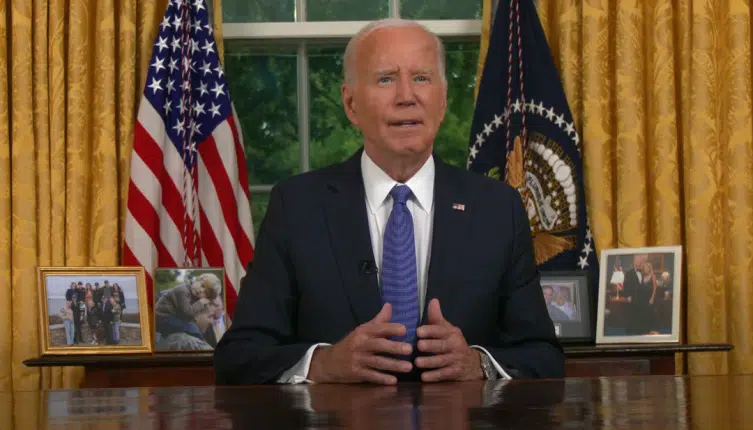
By David Potter
2023 is just around the corner, and with it comes several social media marketing trends that are sure to impact politics as we know it. These trends will offer new opportunities for Congressional communications with constituents, how politicos run their campaigns, and how issue-oriented organizations reach potential donors. Let’s take a closer look at eight trends and what each could mean for those in the political world.
Demand Outpacing Supply
First, the supply of content consumption is greater than the supply of content creation. Yes, you read that correctly. Seventy-four percent of Americans use social media. On average, people spend 147 minutes per day scrolling, watching, listening, and reading. Remember this when you’re wondering if there is no room for you in your niche on social. Quite the contrary, there is a growing audience seeking value. Over 2 million creators globally make six figures. Not that everyone desires to become a creator, but the demand for high quality content is there.
Building Relationships Best Way To Sell
One way this audience seeks value is relational. To become a top brand (candidate, organization, campaign) in the digital space, one needs to build authentic relationships and continually reach new audiences. Hard sale tactics that emphasize product features without a backstory are no longer working well. “73 percent of consumers are willing to pay more for products that guarantee total transparency.” This brand loyalty isn’t exclusive to monetary transactions. The same is true with politicians. Americans may not have been thrilled by some of the things Donald Trump said in 2015-2016, but he attracted passionate supporters with his straight talk.
Social Media Listening Goes Mainstream
Social media listening is the process of monitoring social media channels for brand mentions, keywords, and other relevant topics. It can help you understand what people are saying about your brand, find new leads and customers, and track your competition. Digital software has made social listening relatively cheap compared to the past when there was a monopoly on social listening. Intelligent marketing takes this a step further by using social media listening data to inform your marketing decisions. For example, if you notice that many people are talking about a certain topic on social media, you might decide to create content or advertising around that topic. Or if you see that people are unhappy with your product, you might decide to address the issue head-on.
Paid Advertising Is Becoming a Necessity
As social media becomes more saturated, paid advertising is becoming a necessary evil for those looking to get their message out. The reason for this is simple: with so much content being shared on social media, it’s becoming increasingly difficult to get your voice heard if you’re not paying for advertising. This is especially true on platforms like Facebook and Twitter, where the majority of users are now shielded from unpaid advertising by ad blockers. As a result, businesses and organizations are having to spend more and more money on paid advertising to reach their target audiences. This may sound contrary to there being a “massive demand for content”, but consumers get overwhelmed when their number of brand encounters is very high in a short period. That is why Facebook decreased its organic reach to 5 percent. People were upset that they were seeing fewer pictures of their family. Develop an ad budget to allow yourself to access new audiences. Then use video for organic reach once you have followers/leads and create a call to action to scoop them onto your email list.
Social Commerce on the Rise
Consumers are increasing their spending at online stores hosted within social media apps. Social commerce offers more convenience and there is a greater sense of security. Eighteen percent of Americans made purchases within social media apps in 2020. An estimated 101 million Americans will be social commerce buyers in 2023.
Facebook and Instagram are currently the leaders in social commerce, but other platforms are catching on. Once more, this does not exclusively apply to products. Instant experience lead forms and donation calls to action will see more success within the social media echo system for the same reasons previously mentioned.
Video Content is King
Video is dominating pictures, hyperlinked articles, and audio. This is because the video is a highly engaging format that allows people to connect with your brand or message in a very personal way. Not only that, but social media platforms are favoring video content more and more. For example, Facebook now gives priority to videos in the News Feed, and Twitter has been increasing its allotment of advertising dollars to video content. If you’re not using video content yet, it’s time to start. Here are three tips for creating successful social media videos: Keep your videos short and sweet, make sure your videos are visually appealing and make sure your videos are relevant to your audience. Incorporating video content into your social media strategy is a must.
Social Audio Is on The Rise
Audio is not anything new, but its appearance and popularity on social media are surging. Radio, podcasts, and music playlists are all examples of audio plans. A social audio strategy focuses on the platforms that offer audio-only capabilities. Twitter has Twitter Spaces and it’s monetizable. Similarly, Facebook has Rooms. You can promote audio-only discussions or important news as a brand. A social audio strategy isn’t necessary for every business, but if it aligns with your niche, the audience and monetization are on an upward trend.
A Social Media Crisis Plan Is a Necessity
Lastly. if your business or organization finds itself amid a social media crisis, it’s crucial to have a plan in place. A social media crisis can happen for a variety of reasons, such as a negative review, a social media hoax, or an employee who posts something inappropriate. No matter what the cause, it’s important to have a plan in place for how you’ll handle the situation.
Your social media crisis plan should include the following:
-A list of people who will be responsible for responding to the crisis
-A set of predetermined messages that can be used in response to the crisis
-A strategy for mitigating the damage caused by the crisis
-A plan for repairing your reputation after the crisis is over
If you don’t have a social media crisis plan in place, now is the time to create one. And if you already have a social media crisis plan, make sure it’s up-to-date and ready to use.
Surfing these social media trends in 2023 can build a loyal constituency, win a seat in office, and even unlock opportunities for new donors. Have fun creating! Subscribe to the Liberty Report for the latest in liberty news: https://limitgov.salsalabs.org/RestoringLiberty
David Potter is a contributing editor at Americans for Limited Government.






